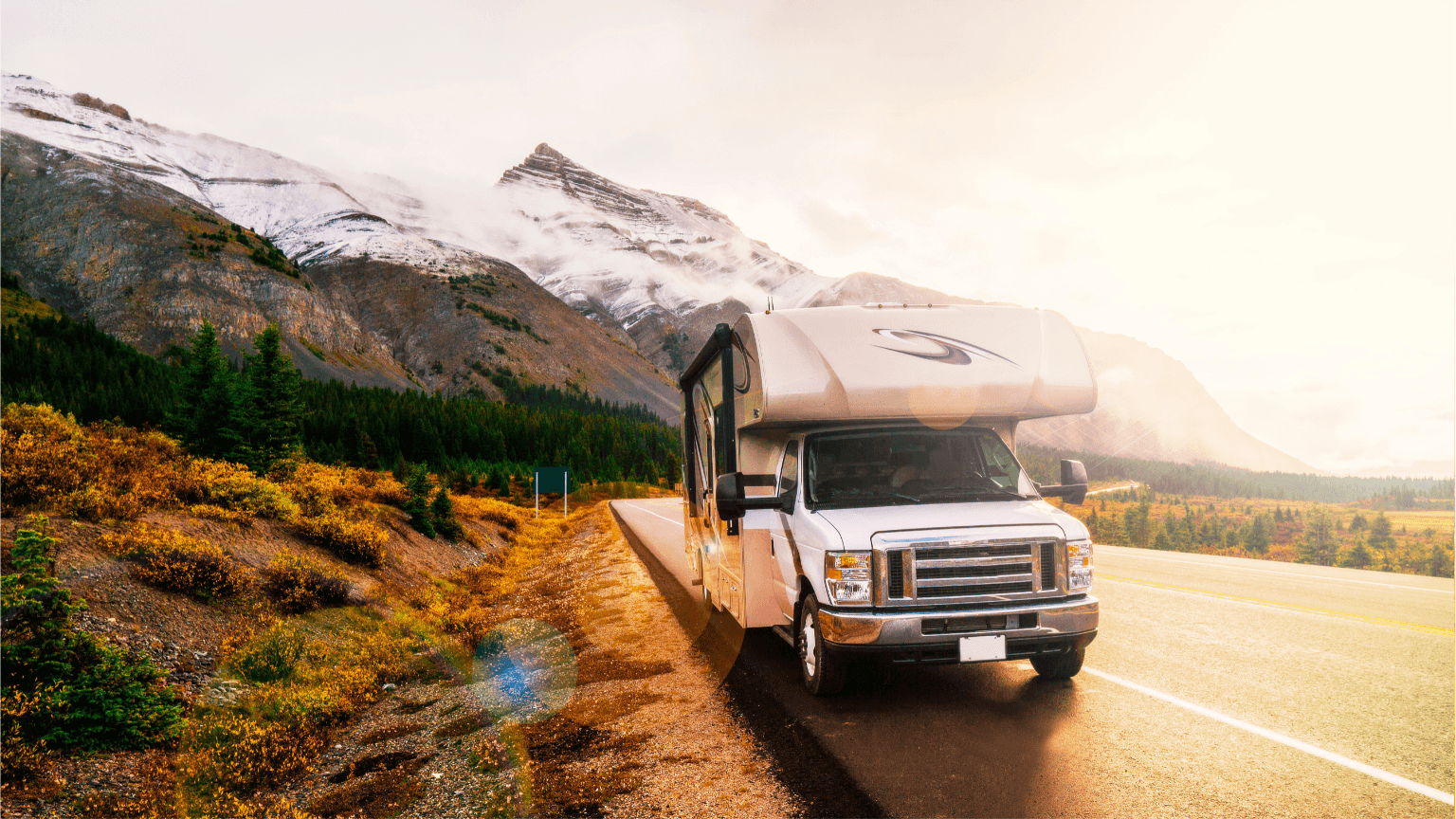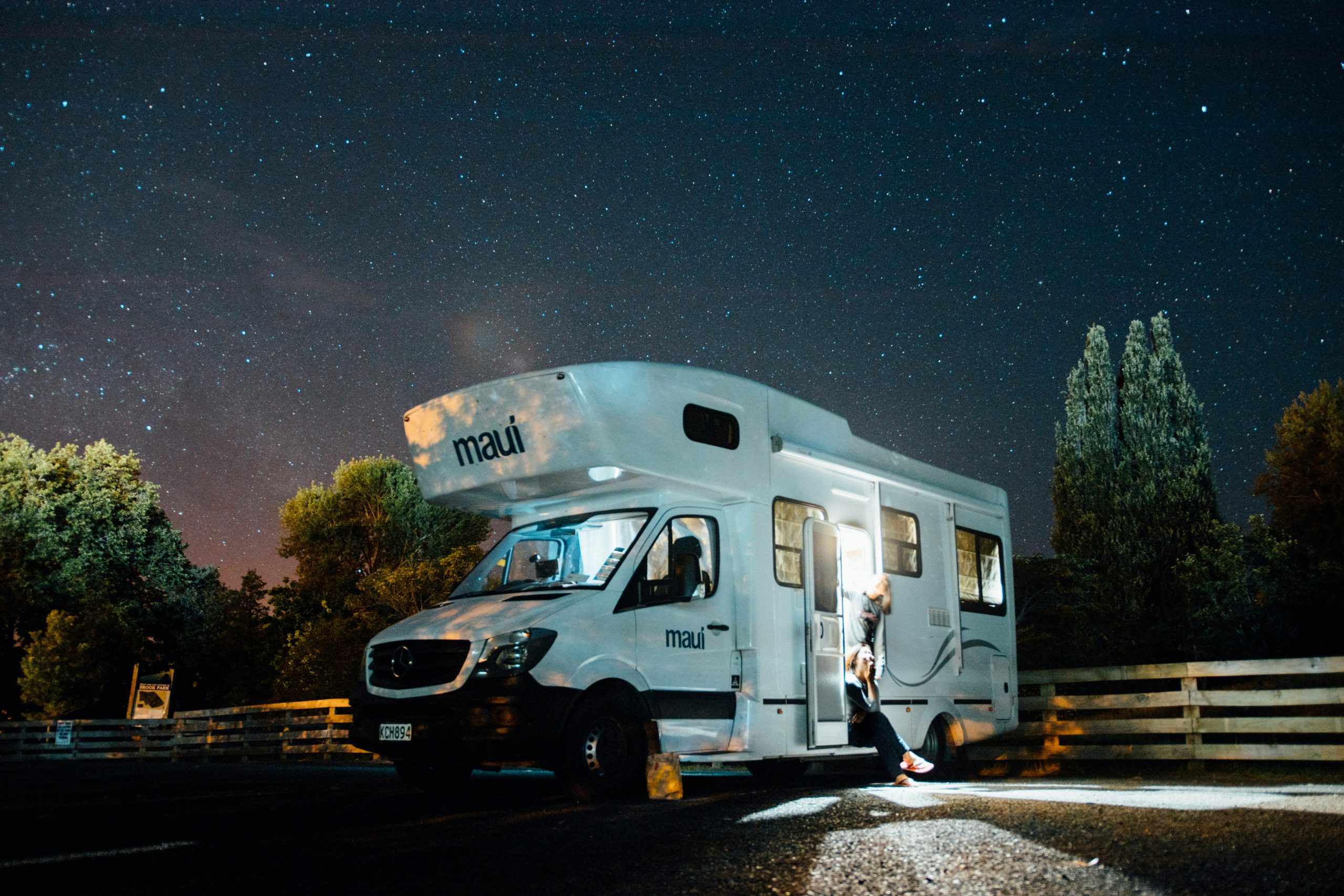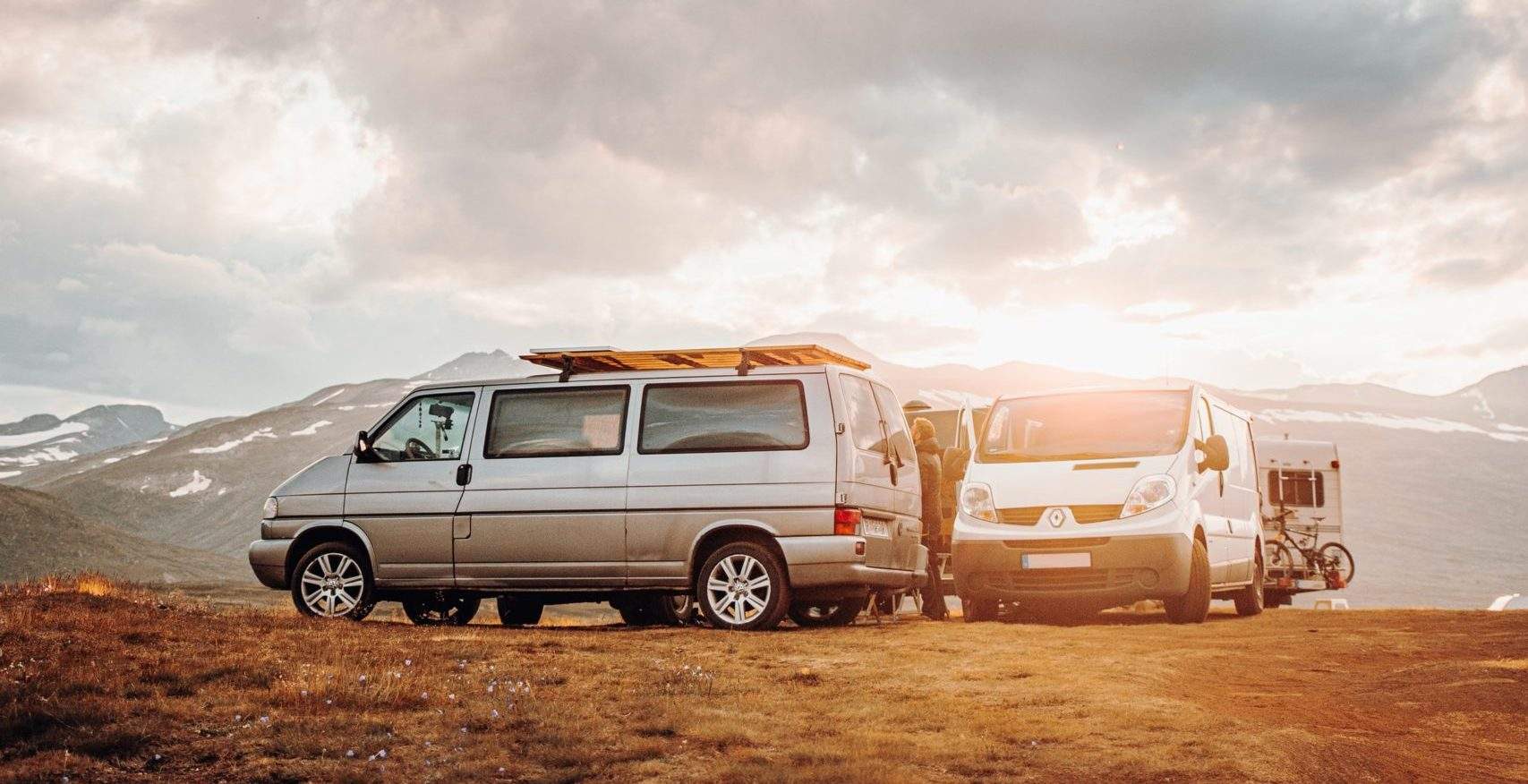Living full time in an RV is something that many people aspire to do. Luckily, it’s getting easier to achieve that dream. Nowadays, full time RV living is no longer an option that is only available to those that are retired; younger folks with location-independent jobs are hitting the road in record numbers. So if you’ve thought about packing up and going on an epic adventure, keep reading. We’ve filled this article with everything you need to start your full time RVing dream.
Full-Time Ready RVs For Rent Near You
Must-Haves for Full-Time RVing
When you’re living in an RV full time, there are certain things you need. These RV essentials will ensure you are safe and comfortable.

A go with the flow attitude
Yes, you should have a general plan when you’re on the road. However, things don’t always go as planned. There could be a natural disaster blocking your route, something in your RV could break, or you could be enjoying yourself so much that you’re just not quite ready to leave camp yet.
Whatever the reason, full time RV living means having to be flexible and open to change. Don’t be afraid to modify your original plans. After all, one of the best things about RVing is the freedom it brings.
Connectivity
While it’s great to unplug, if you’re working while living full time in an RV, then you definitely need to stay connected. Some destinations for digital nomads make it easy to find WiFi. Others, not so much. Additionally, campground WiFi connections aren’t always strong, so it’s best not to depend on them. Instead, have items like cell signal boosters and hotspot antennas. To keep all of your devices charged, having an extra battery pack is also a good idea.
General RV essentials
These must-have items will keep your stress levels down when you’re full time RVing.
- RV drinking water hose
- Sewer kit
- Power management system/surge protector
- Tire pressure gauge
- Fire extinguishers
- Extra fluids
- Jumper cables + battery jump pack
- Dry camping/boondocking gear
- Emergency survival kit
Sleeping essentials
How much you need will depend on your RVs heating and cooling systems, but this is a good list to start with.
- Blankets or sleeping bags
- Pillows
- Bedding and sheets
- Warm PJs
Kitchen essentials
Bigger RVs will have more room, but with some organization, these items should fit in any RV type.
- Coffee making supplies
- Can opener
- Wine opener
- Portable camping stove
- Grill
- Plates, utensils, and sharp knives
- Cutting board
- Pots and pans
- Cooler
- Matches/lighter
- Reusable food storage containers
- Hotpads
- Dish towels and rags
- Compostable trash bags
Clothing essentials
You want to be prepared for any kind of weather, remember to use layers, and have items that compact easily.
- Base layers
- Multipurpose shoes
- Swimsuit
- Compactable jacket
- Socks and underwear
- Raincoat
- Comfortable/free-flowing clothing
Personal essentials
Keep these items nearby to be as comfortable as possible while full time RV living.
- Bug spray
- Bear spray
- Medication
- Toothbrush and toothpaste
- Soap and shampoo
- Deodorant
- Lotion/moisturizer
- Eye drops
- Sunglasses
- Sunblock
- Detergent
- Laundry bag
Camping essentials
You’re likely living in an RV full time is because you want to spend more time outdoors. So, make sure to have this gear with you, to make the best of your outdoor time.
- Portable fire pit
- Firewood
- Board games and card games
- Yard games
- Hammock
- Camping chairs
- Camping table
- Outdoor rug
Tips for Living in an RV Full-Time
Now that you have your list of must-haves for full time RV living, let’s go over some additional tips that will make your journey a little easier.

Where to stay
As you start to plan out your RV route across America, keep in mind that you’ll need to figure out where you’ll be parking your rig at night. There are many U.S. cities with great camping opportunities. Three Rivers, California and Bend, Oregon are two of the best.
Some RV campgrounds require booking months in advance, especially if they are close to some of the more popular national parks. Be sure to keep that in mind as you plot your course.
If you’re more of a go-with-the-flow RVer, then you could try boondocking in a national forest or on BLM land. Walmart parking lots are also a great option. They are well-lit and you can pop in if you need to use the restroom or need to stock up on anything.
How to save money
Although living full time in an RV can be cheaper than living in a house or hopping from hotel to hotel, there are still additional ways to save money.
- Learn some basic DIY RV maintenance — Getting to know and feeling comfortable with certain aspects of your RV can save you a lot of money in the long run. Staying on top of things, like cleaning out your air filter seasonally, can save you headaches and money. If you don’t inspect and maintain your RV regularly, odds are when you do finally notice something wrong, it will no longer be an easy fix. That means it will cost a lot more money to fix and could take a longer period of time to repair.
- Meal prep and cook your own meals — Obviously as you’re out exploring the country you’re going to want to visit local restaurants. But doing that every day can get expensive! That is why meal prepping is such a great way to save money while you’re full time RV living. Plan out your meals for the week and buy exactly what you need so nothing goes to waste. Be sure to use tupperware and other reusables for leftovers to have an eco-friendly road trip.
- Use RV trip planner apps — There are a lot of great apps out there and many are made specifically for RVers. These apps can help you find the best route based on the height and weight of your RV, can help you find a campground, and more. Apps like GasBuddy can also help you find the cheapest gas along your route.
- Join an RV discount club — There are a few RV membership clubs out there, so you will have to research which is the best fit for you, but generally you pay a little up front and then you get discounts at select RV parks. These discounts can add up when you’re RV living full time.
- Stay in one place longer — If you stay at a campsite for a longer period of time, you’ll get a better rate. A monthly campground rate is usually less expensive than a daily rate, so it often works out to be like getting a free week. You’ll also be saving money on fuel.
- Consider work camping or volunteering — Another way to save money is to work or volunteer at a campsite or park. Your work hours would be in exchange for free camping. Each campground or park will have different requirements, so be sure to hash out exactly how much would be expected of you.
- Visit areas during shoulder season — You might have to deal with a bit of unpleasant weather here and there, but prices for most things will be much lower. There will also be smaller crowds so you can have the area all to yourself.
Full-Time RV Living FAQs
Here’s a roundup of frequently asked questions about full-time RV living, covering the basics and offering insights into making life on the road more comfortable and sustainable.
What type of RV is best for full-time living?
There’s no one-size-fits-all answer, as the best RV for full-time living depends on your needs, lifestyle, and budget. Travel trailers, fifth wheels, and motorhomes are popular choices. Motorhomes offer convenience for frequent moves, while trailers and fifth wheels typically provide more interior space and storage. Consider factors like space, towing capacity, and amenities when choosing an RV for full-time living.
How do you receive mail and packages on the road?
Many full-time RVers use a mail-forwarding service, which provides a stable mailing address and forwards mail to your current location. Services like Escapees Mail Service or America’s Mailbox are popular among RVers. For packages, you can have items shipped to nearby post offices (using General Delivery) or to pickup locations like Amazon Lockers.
How do you stay connected to the internet?
Reliable internet is crucial for most full-time RVers, especially those who work remotely. Common options include mobile hotspots, cellular data plans, and Wi-Fi extenders. Many RVers use a combination of mobile data (through a cellular hotspot or router) and Wi-Fi at campgrounds or coffee shops. Services like Starlink offer satellite internet, which is another option for remote locations.
How do you handle laundry?
Some RVs come equipped with compact washer/dryer units, but many full-time RVers use laundromats or campground laundry facilities. Portable washing machines or drying racks can also be used in smaller spaces. In many cases, laundromats are practical for handling larger loads of laundry at once.
How do you find places to park or camp?
There are various options for finding campsites, from private RV parks to public lands and boondocking (free camping). Apps like Campendium, iOverlander, and AllStays help you locate free or paid campsites and provide reviews from other travelers. If you prefer boondocking, public lands managed by the Bureau of Land Management (BLM) or the U.S. Forest Service offer free dispersed camping.
What about healthcare on the road?
For healthcare, many full-time RVers rely on nationwide health insurance plans or participate in health-sharing programs. Telemedicine services can be convenient for minor medical needs, and urgent care centers are available in most areas. For prescriptions, large chains like Walgreens or CVS allow you to transfer prescriptions between locations across the country.
Is full-time RV living expensive?
Costs vary widely based on travel style and lifestyle choices. Major expenses include campground fees, fuel, maintenance, and insurance. Staying in one place or boondocking can lower costs, while frequent travel can increase fuel expenses. Many full-time RVers track expenses carefully to balance their budget, and some work remotely or seasonally to support their lifestyle.
What are the downsides to full-time RV living?
RV living can be challenging at times. Limited space, maintenance issues, and fluctuating weather can all be stressful. Constant repairs and maintenance are common, and you’ll need to plan carefully to avoid burnout from too much travel. However, many RVers feel the freedom and experiences outweigh these downsides.
How do you keep your RV warm in winter and cool in summer?
Insulating windows, using skirting around the RV, and investing in a reliable heating system are key for winter. To stay cool in summer, using reflective covers on windows, fans, and portable air conditioners can help. Parking in shaded spots and staying in milder climates seasonally can also help maintain a comfortable temperature.
How do you handle waste management?
Most RVs have onboard tanks for black (toilet) and gray (sink and shower) water. You’ll need to empty these tanks regularly at dump stations found at campgrounds, truck stops, or public rest areas. Properly managing waste is essential to avoid odors and tank issues.
Ready to Start Full-Time RVing?
Your dream of living in an RV full time can now become a reality. You may face some challenges along the way, but it will be the experience and adventure of a lifetime. You’ll be able to travel slowly, see amazing places, and meet people who have the same mindset as you. In fact, one of the biggest lessons learned by those living in an RV is that you’ll have very meaningful experiences with others that you meet on the road.
However, if you’re still a bit hesitant to start RV living full time, you can try it out first by renting an RV with Outdoorsy. You can search by location, size, and amenities. It’s a good way to see which type of RV works best for you and your family. That way, when the time comes to buy your own RV, you’ll know exactly what you want. And after reading this guide, you’ll be ready to start your new full time adventure.








